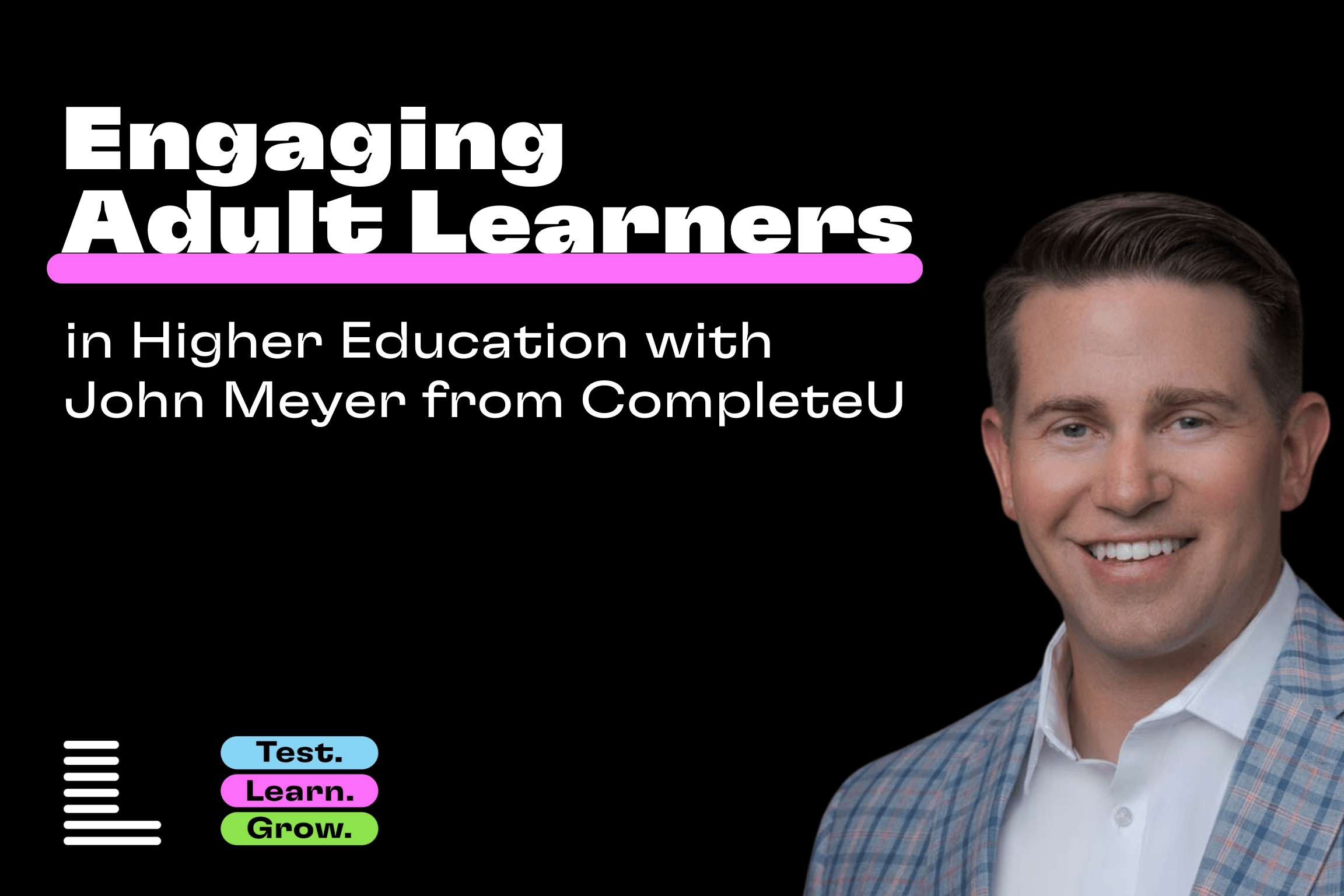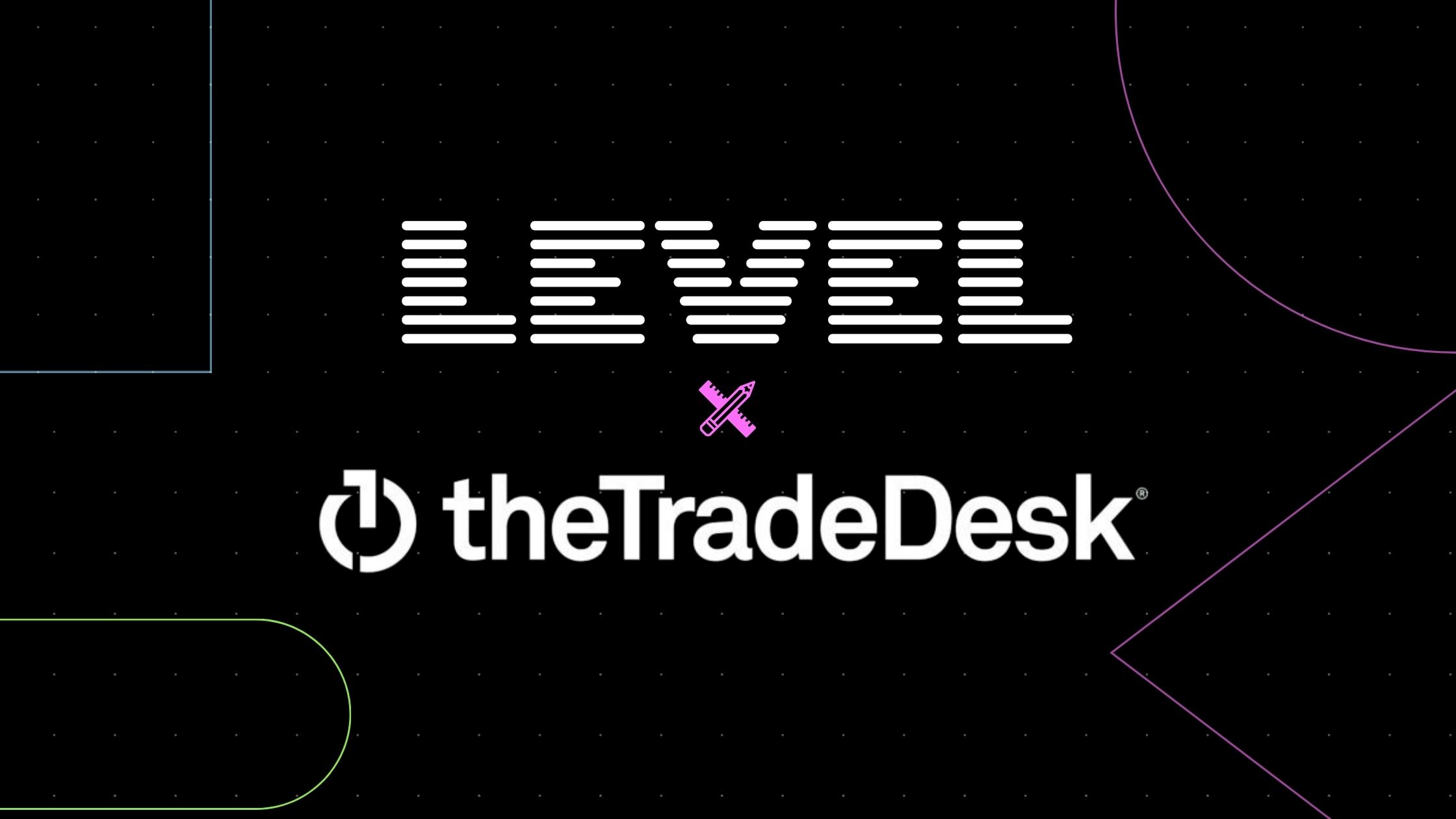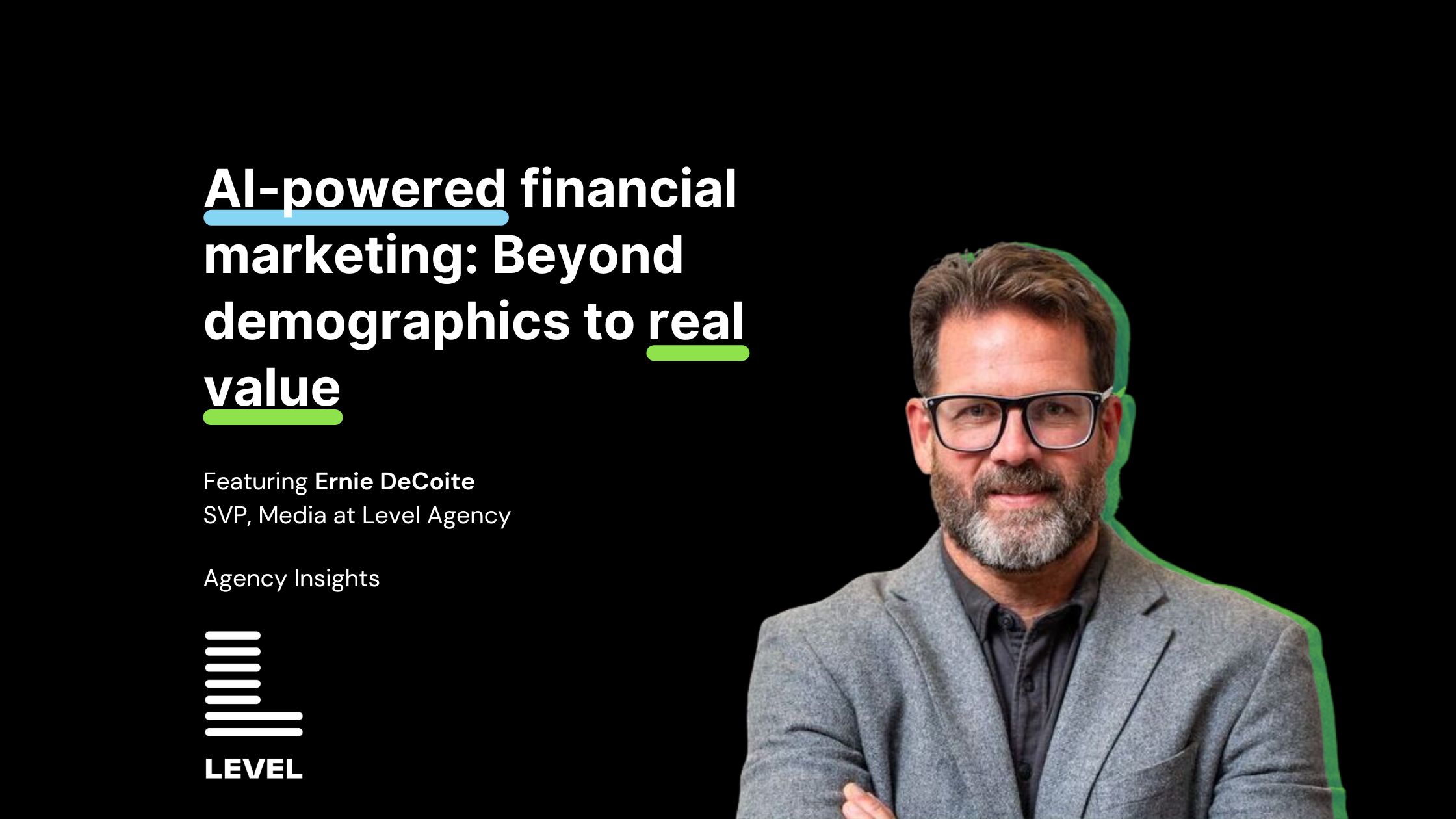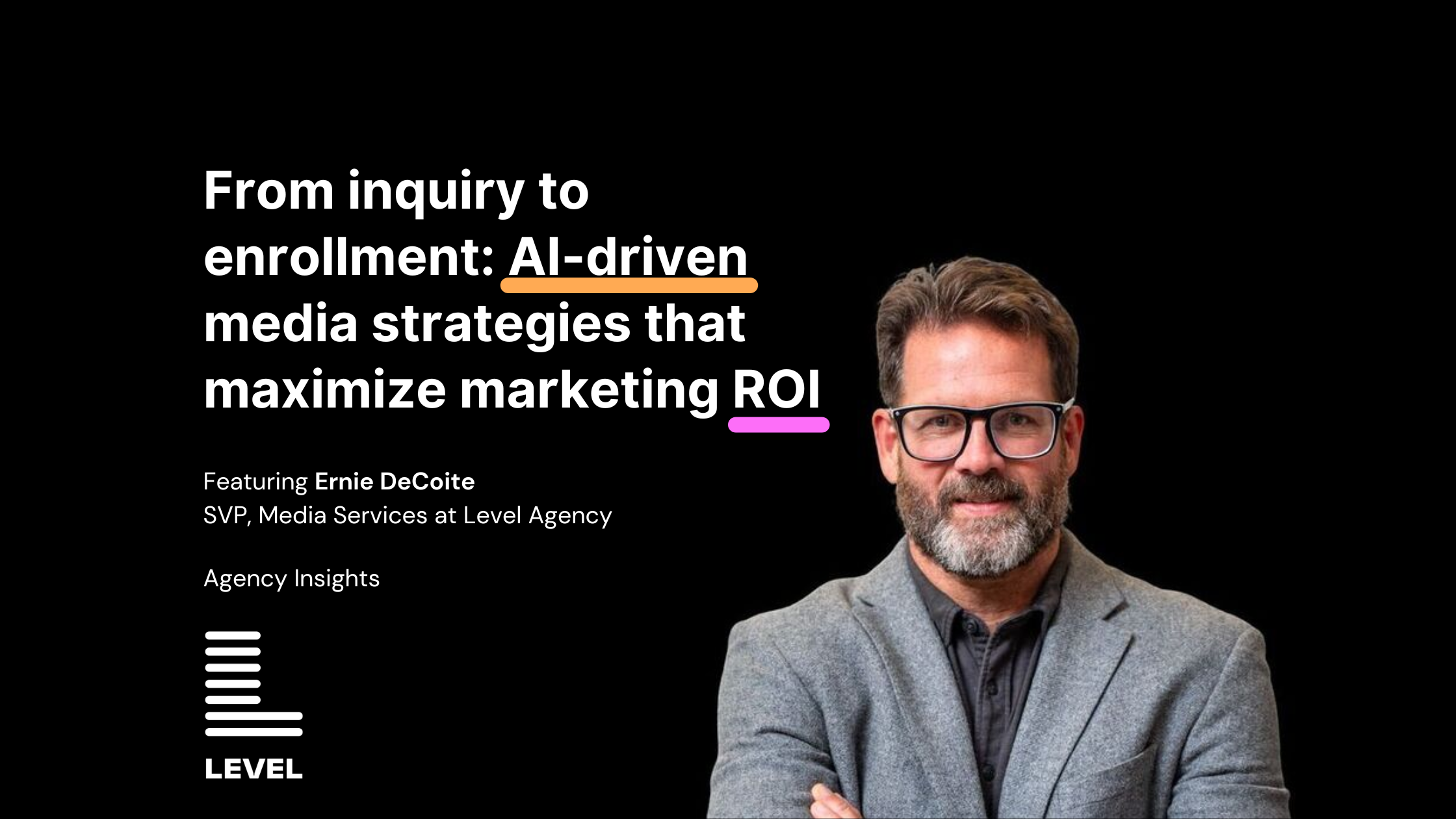Higher education is facing a seismic demographic shift. The traditional college-going population of 18-22 year olds is shrinking. An enrollment cliff is coming. It’s estimated that from 2025 – 2029, colleges and universities will lose approximately 576,000 students.
But the number of adult learners returning to school is booming. In fact, today adult learners make up 42% of higher education revenue, and that number is only expected to increase in coming years. This major market segment presents a tremendous growth opportunity for colleges and universities ready to evolve.
In this episode of the Test. Learn. Grow. podcast, host Dave Babst, VP of Agency Development at Level, talks with CompleteU CEO John Meyer about strategies to engage adult learners. Their insightful discussion sheds light on the barriers adult students face and provides actionable ways higher ed institutions can adapt.
Let’s explore the key takeaways from Babst and Meyer’s conversation.
Hurdles on the Path to a Degree
Why do so many adults start but never finish college? Meyer outlines the primary obstacles:
- Inflexible admissions policies for students with prior credits.
- Limited financial aid for part-time enrollment.
- Class schedules conflicting with work and family responsibilities.
- Lack of career counseling to align programs with career goals.
This perfect storm of hurdles leads to high dropout rates among adult learners. But creative institutions are finding ways to smooth the path.
Building a More Welcoming Higher Education Institution
How can colleges meet the unique needs of adult students? Babst and Meyer recommend several open-minded steps:
- Create flexible admissions policies that make it easy for adults to enroll and transfer credits. Accept experience for credit, relax time limits on transfer credits.
- Offer evening, weekend and accelerated classes convenient for working students. Condense semesters, provide hybrid formats.
- Develop online and hybrid learning options that allow remote participation. Leverage quality online platforms.
- Provide transparent tuition rates and financial aid for part-time enrollment. Customize aid for non-traditional schedules.
- Offer career counseling services to help students choose programs matching career goals. Counselors guide adults to programs that fit their skills.
- Conduct high-touch, personalized outreach and ongoing support. Dedicated advisors check in regularly.
According to Meyer, it all comes down to taking an empathetic, student-focused approach. Treat adult learners like people, not numbers. This ethos builds trust and boosts retention.
Partnering with Employers
Forward-thinking schools are also forming partnerships with employers to support upskilling. For example, collaborating with a healthcare system to help LPNs earn a bachelor’s degree in nursing. Or working with a school district to help paraprofessionals become certified teachers.
By aligning programs with local labor market needs, institutions can meet demand while providing a talent pipeline. It’s a win-win for both parties.
The Future is Now Higher Education Leaders
Babst and Meyer agree – higher education’s future relies on meeting adult learners where they are. The schools that evolve to offer greater flexibility and support will thrive. Those clinging to the status quo will be left behind.
What creative steps can your institution take today to open more doors for adult students? It’s an opportunity ripe for experimentation. The time to learn and grow is now.








